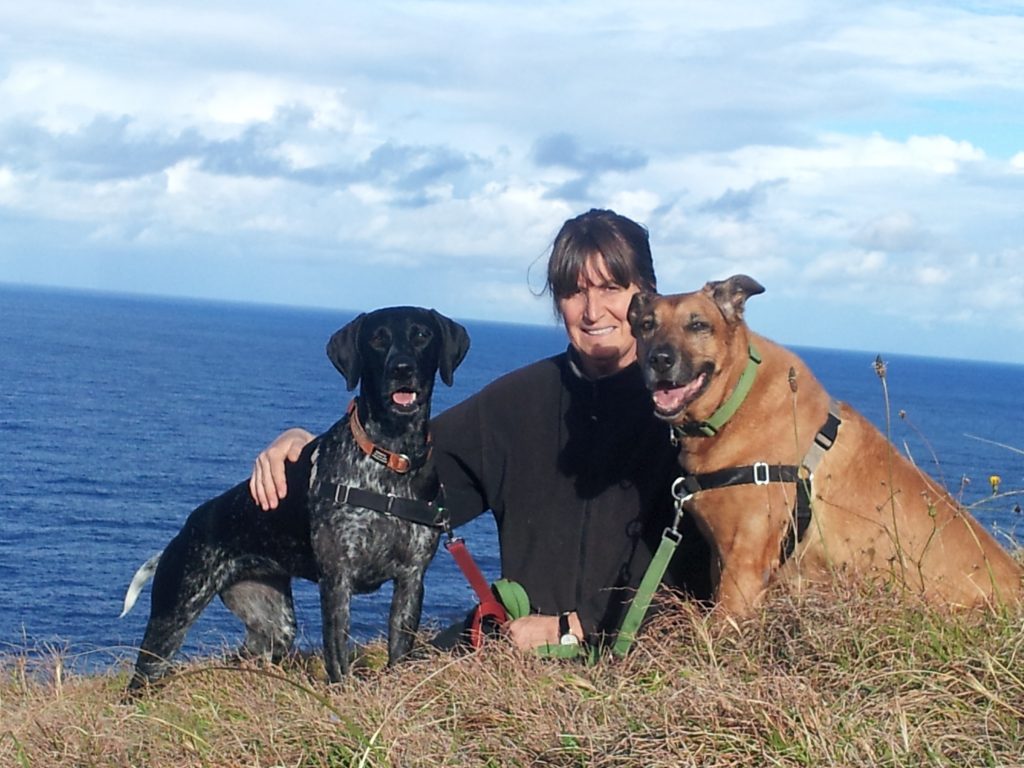Goodog owner Barbara Hodel addresses how change is difficult in humans too.
As trainers we sometimes talk about compliance by our clients or maybe more accurately the lack of it. Part of our job as dog trainers is to find ways to motivate clients to make changes to the lives of their dogs. Often this means they also need to change the way they do things. To change the dog’s behaviour we need to change the humans’ behaviour first. Change is difficult in humans too and we humans need good reasons to initiate change.
I recently saw a client with a dog who showed signs of separation distress and after the initial assessment we went through the ins and outs of a behaviour modification process to help the dog remain calm when left alone. Separation distress is a challenging condition and the associated behaviour change program requires a lot of effort from their humans. In some cases the dog cannot be left alone at all until some behaviour modification has been implemented successfully and some cases need medication.
In this case I suggested trying the recommended behaviour modification for two weeks and if we did not see marked improvement consulting a veterinarian behaviourist to discuss medication. Despite being in contact with the client, thanks to social media I saw the dog come up on another trainer’s page. Some trainers might know that sinking feeling when that happens, especially if the other trainer uses a different approach.
The reason why I am mentioning this is that this experience made me think about why as dog trainers we sometimes have trouble initiating change with our human clients.
It might have to do with our main focus being the dog and the behaviour modification that has to be done with the dog rather than the behaviour modification for the humans.
Despite being called dog trainers we spend a lot of time talking to people and trying to change their way of doing things and maybe, in addition to our knowledge of dog behaviour, we might need to focus more on our communication skills with humans. Trainers are also humans and I must remember that change is difficult in humans too.

I discussed the case I mentioned with my counsellor [1] and she recommended looking into ‘motivational interviewing’. She also pointed out that most people will go for ‘a quick fix’ if one is offered and asked how I was going with the exercises my physio therapist gave me? That brought the point home. Despite my best intentions my exercise were not really going very well and I was looking into alternative options that promised a quicker result. It is human to do so. It also helped me to understand why my clients had sought a different approach that seemed easier and required less change from their side.
Instead of asking for ‘compliance’ we might have to find ways for our clients to take ownership.
When clients call us for help with their dogs they have a problem and often some kind of crisis brought it to a head on. This might be the neighbours complaining about the barking, the dog has bitten another dog or a person or it took them two hours to get the dog back at the off leash area. They are aware that they need to change something but somehow they just cannot get it started and seem ambivalent. It seems all our reasoning, logic, pointing out the consequences or behaving as ‘the expert’ does not work.
Compliance by humans does not always occur. This might be the crux, when we talk about compliance we assume that the client has to comply with our recommendations, but it just does not get the results we hope for. We might be well meaning but telling our clients what to do can build resistance.
I started looking into motivational interviewing [2] and while I do not say we need to become motivational interviewing experts using some of its techniques might help our clients to get motivated for change.
In the case I described earlier, I probably ‘lost’ my clients when I started explaining the process of desensitizing and counter conditioning. My clients were overwhelmed by the sheer size of the task and might have concluded that the status quo after all might be easier to maintain then the change.
Before embarking on the dog’s behaviour change I could have discussed the benefits and costs of ‘just living with it’ and the benefits and costs of embarking on this process. This helps to understand the situation better and can emphasize the benefits of change.

These clients cannot go out without being worried because the dog vocalises and neighbours complain on a regular basis. This is highly stressful for the dog and their human. If the dog was able to spend some time on their own, their human could have a social life again. It also shows that the cost of living with it is high and not feasible in the long term.
I could have asked a scaling question, meaning that the client rates on a scale of one to ten how important it is for them to change right now. This gives me an indication on how big the ‘burden of suffering’ is and depending on this design a behaviour modification program that matches their level of motivation for change. I also should have listened more to the ifs and buts.
There was nothing wrong with giving advice but maybe I should have phrased it as a suggestion or encouragement rather than ‘expert advice’ expecting compliance.
In the meantime I have started changing my approach and have talked to the clients again, this time discussing the benefits and costs of ‘living with it’ and how much it means to them to have a social life again. We also have engaged a veterinary behaviourist and I am hopefully second time round we will be able to make better progress.
I am not expecting miracles but changing my behaviour has helped changing my clients’ behaviour and therefore has helped making changes for the dog.
On a personal level I have stopped talking about compliance but will expand my knowledge of motivational interviewing and change my approach to hopefully being more successful in helping my clients. But I remember that change is difficult in humans too even if I see the benefits!
Considering change is difficult in humans too, Barbara’s book on teenage dogs addresses how we can best communicate with our dogs: How to love and survive your teenage dog.
[1] I find having regular sessions with a counsellor is very helpful for debriefing and invaluable for my own wellbeing. Dog training can be a challenging job and burnout or compassion fatigue can part of it for some of us.
[2] The spirit of MI can be translated into five central principles summarised by the acronym DEARS:
- Develop discrepancy
- Express empathy
- Amplify ambivalence
- Roll with resistance
- Support self-efficacy
About Barbara
In 2015 Barbara completed her Diploma in Canine Behaviour Science and Technology at the Companion Animal Sciences Institute in Canada.
Barbara has been involved in dog training for the last 20 years and has completed her Certificate IV in Companion Animal Services with the Delta Society in 2007 and is a professional member of the Delta Institute.
She competes in the dog sport of Agility and Rally O and Shellbe (a German short-haired pointer) competes on Master level in Agility and Rally O. Chillax, one of Shellbe’s puppies, competes in Rally O and got his Rally Novice title in October 2019. He is just starting out in Agility.
Barbara is the President of the Pet Professional Guild Australia. The Guild promotes force free and humane training for all pets.
Barbara holds a Master’s Degree in Modern European History and Economics from the University of Berne (Switzerland) and a MBA (Master of Business Administration) from Southern Cross University Australia. In addition, Barbara has in-depth experience in adult education and training, having taught high school and university students in Berne, college students in Sydney, as well as middle and top management employees of a large public corporation in Switzerland.
- Certificate IV in Companion Animal Services with the Delta Society (2007)
- Diploma in Canine Behaviour Science and Technology at CASI Canada (2015)
- Advanced Animal Training at Illis ABC Sweden (2021)
- Master’s Degree in Modern European History and Economic (University of Berne, Switzerland)
- MBA (Master of Business Administration from Southern Cross University Australia)
- President of the Pet Professional Guild Australia.
- Professional member of the Delta Institute
You can contact Barbara on Barbara@goodog.com.au.













